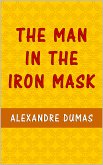If I do not remember well when, I can at least say exactly how my first love revealed itself. I was very fond-as soon as my aunt had gone to church to perform her evening devotions-of slipping into her bedroom and rummaging her chest of drawers, which she kept in admirable order. Those drawers were to me a museum; in them I always came across something rare or antique, which exhaled an archaic and mysterious scent, the aroma of the sandalwood fans which perfumed her white linen. Pin-cushions of satin now faded; knitted mittens, carefully wrapped in tissue paper; prints of saints; sewing materials; a reticule of blue velvet embroidered with bugles, an amber and silver rosary would appear from the corners: I used to ponder over them, and return them to their place. But one day-I remember as well as if it were today-in the corner of the top drawer, and lying on some collars of old lace, I saw something gold glittering-I put in my hand, unwittingly crumpled the lace, and drew out a portrait, an ivory miniature, about three inches long, in a frame of gold.
I was struck at first sight. A sunbeam streamed through the window and fell upon the alluring form, which seemed to wish to step out of its dark background and come towards me. It was the most lovely creature, such as I had never seen except in the dreams of my adolescence. The lady of the portrait must have been some twenty odd years; she was no simple maiden, no half-opened rosebud, but a woman in the full resplendency of her beauty. Her face was oval, but not too long, her lips full, half-open and smiling, her eyes cast a languishing side-glance, and she had a dimple on her chin as if formed by the tip of Cupid's playful finger. Her head-dress was strange but elegant; a compact group of curls plastered conewise one over the other covered her temples, and a basket of braided hair rose on the top of her head. This old-fashioned head-dress, which was trussed up from the nape of her neck, disclosed all the softness of her fresh young throat, on which the dimple of her chin was reduplicated more vaguely and delicately.
As for the dress-I do not venture to consider whether our grandmothers were less modest than our wives are, or if the confessors of past times were more indulgent than those of the present; I am inclined to think the latter, for seventy years ago women prided themselves upon being Christianlike and devout, and would not have disobeyed the director of their conscience in so grave and important a matter. What is undeniable is, that if in the present day any lady were to present herself in the garb of the lady of the portrait, there would be a scandal; for from her waist (which began at her armpits) upwards, she was only veiled by light folds of diaphanous gauze, which marked out, rather than covered, two mountains of snow, between which meandered a thread of pearls. With further lack of modesty she stretched out two rounded arms worthy of Juno, ending in finely molded hands-when I say hands I am not exact, for, strictly speaking, only one hand could be seen, and that held a richly embroidered handkerchief.
Dieser Download kann aus rechtlichen Gründen nur mit Rechnungsadresse in A, B, BG, CY, CZ, D, DK, EW, E, FIN, F, GR, H, IRL, I, LT, L, LR, M, NL, PL, P, R, S, SLO, SK ausgeliefert werden.









